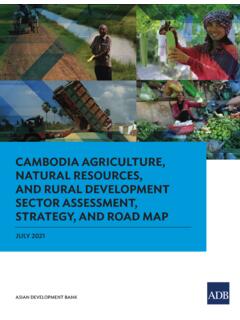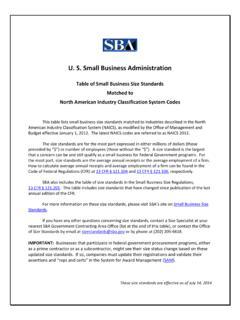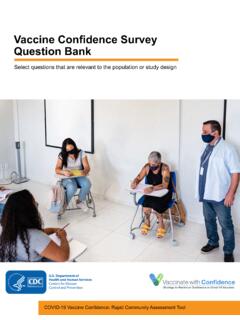Transcription of REDUCING POVERTY THROUGH AGRICULTURE - WeEffect …
1 REDUCING POVERTY THROUGH AGRICULTUREC over: Mable Chikombo, with young Michelo on her back, Zambia. Photo: Anders Hansson cover, pages 5, 14, 16, 18, 20, 27, 31. Nick Sells page 2. Marcus Lundstedt page 6. REDUCING POVERTY THROUGH AGRICULTURECONTENTS: AGRICULTURE is the key to REDUCING POVERTY 7 The poorest of the world s population make a living from farming 7 The most effective way to lift people out of POVERTY 7 AGRICULTURE provides jobs where there is no other employment 8 Increased equality yields more sustainable AGRICULTURE 9 The farmers need to organise themselves 12 Small investments can make a big difference 12 Land is an increasingly important resource 12 Future challenges and potential in AGRICULTURE 15We Effect on the ground 17 AGRICULTURE must be restructured 19 Climate change threatens AGRICULTURE 19 AGRICULTURE contributes to climate change 19 Other
2 Negative environmental impact from AGRICULTURE 21 Sustainable AGRICULTURE that is productive 21We Effect on the ground 23 Economic prerequisites for sustainable AGRICULTURE 24 The way forward 26We Effect on the ground 28 Abbreviations 29 Sources 29 REDUCING POVERTY THROUGH agricultureAuthor: Agneta Gunnarsson and Mats Wingborg. This report is published with support from Sida. Sida has not participated in production and responsibility for the content rests with the : Niclas Ericsson, Fredrik Moberg. Production: Treativ. Printing: Danag rd LithoWe Effect, SE-105 33 Stockholm, SwedenTel: +46 (0) 8-120 371 00 Website: : 978-91-977467-7-9 - 4 - AGRICULTURE is facing a number of challenges. Con-sideration for the environment, ever more mouths to feed and helping to reduce POVERTY in the world.
3 It will be difficult, but it is possible. We know that investing in AGRICULTURE reduces POVERTY and hunger. However, we also know that AGRICULTURE throughout the world has a direct and indirect impact on practically all the major environmental problems, from loss of biological diversity to climate change. We are perhaps the first generation with the knowledge and resources to alter the trend. Nevertheless, we are not doing enough of what we know is needed. We Effect has compiled this report to provide a summary of the current knowledge at hand about sustainable, small-scale AGRICULTURE as a necessary and effective way to combat POVERTY and hunger. At the same time it can contribute to REDUCING climate and environmental impact. In order to restructure AGRICULTURE to meet the challenges of the future, changes are required.
4 Here in Sweden we can make a difference, THROUGH development cooperation and by pursuing a policy for more efficient and sustainable AGRICULTURE with a diversity of crops and production methods. This type of AGRICULTURE not only produces food but also gives the farmers so much more cleaner water, natural fer-tilisation of the soil, resistance to pests and a more balanced and varied diet. It creates work and gives families the means to provide for themselves. Some essential points for Swedish development coopera-tion are: To direct a greater proportion of development coopera-tion support towards AGRICULTURE . Today only a small percentage of Swedish support goes towards developing AGRICULTURE in poor countries. Focusing on small-scale AGRICULTURE .
5 There are several million small family farms in poor countries with just a few hectares each for growing crops and providing for them-selves. Support for this type of AGRICULTURE reaches many of the world s very poorest people. Focusing on AGRICULTURE that is sustainable and builds strong communities. That means social and economic sustainability, but obviously consideration for the climate and environment is also required for social and economic improvements. Focusing on women. They constitute more than half of the poorest population in rural areas, so at least half of agricul-tural development cooperation support should go to them. Obviously much more is needed; international agreements must be altered and poor countries themselves must also focus more on increased social, economic and ecological sustainability in their farming.
6 However, the insight we want to communicate in our report is simple: Anyone who wants to fight for the poor people of the world must also fight for their agricultural livelihoods. Anneli Rogeman, CEO We Effect ANYONE WHO WANTS TO FIGHT FOR THE POOR PEOPLE OF THE WORLD MUST ALSO FIGHT FOR THEIR AGRICULTURAL LIVELIHOODS. REDUCING POVERTY THROUGH AGRICULTURE - 4 -Nancy Wairimu Kamande, Kenya - 5 - Small-scale farmers often lack access to the necessary technology Read more on page 12 Miguel Adolfo Gonzalez, Nicaragua- 6 - AGRICULTURE IS THE KEY TO REDUCING POVERTYA griculture has a key role to play in food security throughout the world and lifting people out of POVERTY , but at the same time there are a number of challenges to be faced. These include a continually growing global population with new demands for food, fuel and raw materials, plus the fact that a switch to more sustainable and climate-smart far-ming methods is needed.
7 The whole chain from field to table needs to be more resource-efficient with reduced levels of waste. Food secu-rity naturally also involves fair distribution. The food pro-duced must be made available to those who need it most, and productivity and food quality in areas where people are currently suffering from hunger, malnutrition and POVERTY must be improved in a sustainable manner. THE POOREST OF THE WORLD S POPULATION MAKE A LIVING FROM FARMINGA ccording to the UN, around billion people are living in extreme POVERTY , which means that they are living on USD or less per Three out of four of these people live in rural areas and the vast majority of them make a living from AGRICULTURE or occupations linked to latest calculations from the Food and AGRICULTURE Orga-nization of the United Nations (FAO) indicate that almost 800 million people in the world are hungry and In this group too, three out of four live in rural 1.
8 The World Bank, POVERTY overview, The World Bank, AGRICULTURE for Development, World Development Report 2008, FAO, IFA, WFP, State of Food Insecurity in the World, , making a living from AGRICULTURE , fishing or forestry. However, production is seldom sufficient to avoid hunger and malnutrition. This creates negative spirals. Malnutrition impairs people s physical capability and increases suscepti-bility to illness, which in turn reduces their facilities to look after the family farm in the best way, for instance. Not only do several hundred million people go to bed hungry every day; a total of two billion people are suffering from a lack of micronutrients and 500 million are affected by obesity in the world4. In other words, sustainable con-sumption is an essential issue for both rich and poor, in the northern and southern MOST EFFECTIVE WAY TO LIFT PEOPLE OUT OF POVERTYThe 2008 World Development Report was entitled Agricul-ture for It was the first time since 1982 that this heavyweight among multilateral organisations laun-ched an annual report about AGRICULTURE .
9 The World Bank pointed out in its report that it was time to put AGRICULTURE back at the heart of the development agenda because economic growth within AGRICULTURE is at least twice as effective as growth within other sectors with regard to REDUCING POVERTY . However, despite the fact that several years have passed since the report was published, sup-port for AGRICULTURE in developing countries has only increased marginally. 4. FAO, Statistical Yearbook 2013, World food and AGRICULTURE , The World Bank, AGRICULTURE for Development, World Development Report 2008, 7 -According to a study from 2010, AGRICULTURE is even more important than previously believed for lifting people out of The study covered some 80 countries and extended over a period of just over 20 years.
10 It showed that growth within AGRICULTURE in low-income countries can be five times as effective as growth within other sec-tors in terms of REDUCING POVERTY among those who are worst off. In Sub-Saharan Africa, AGRICULTURE can be ten times more effective than other occupations at lifting those worst off out of POVERTY and studies show that a large proportion of the posi-tive effects within AGRICULTURE radiate out like rings in water and have an impact on additional sectors THROUGH increased demand for goods and This in turn creates more jobs within trades and services and increases local consumption. However, reductions in POVERTY achieved THROUGH more productive AGRICULTURE are greater if land and resources are fairly equally divided among the population.



![;r-u|l;m|o=]ub1 t| u ;7oor;u- om -ul;uv=) ;t=-u;](/cache/preview/b/5/0/c/0/0/0/0/thumb-b50c00000f69fa3e48a9e2b601bf2d5a.jpg)


